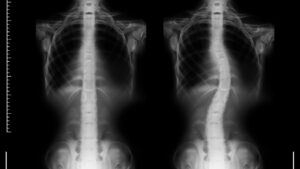While pains and aches are part and parcel of life, they should never be considered normal, and you should never live with them. Pains and aches are signs that the body is not functioning optimally and an indication that proper care and treatment are vital to alleviate the discomfort.
While there are many causes of pain and aches, one of the more common ones is chronic inflammation. Do not underestimate the severity of chronic inflammation. Many studies have shown that they play a significant factor in several life-threatening disorders. In fact, more than 50 per cent of deaths around the globe are caused by chronic inflammatory conditions, such as diabetes, stroke, dementia, cardiovascular disease, and cancer.
Therefore, in this article, we will take a look at some typical signs of inflammation and how you can manage them effectively.
What is an inflammation?
Many of us are familiar with what inflammation brings – the swelling, redness, and pain of the affected area. However, what exactly is an inflammation? Basically, when we injure our body (for example, spraining our ankles during our evening run), our body will increase the amount of blood flow to the injured area, causing the injured area to get red and swell up.
The pain that develops is a beneficial bodily signal that indicates to our brain that something is wrong in the injured area. When we sprain our ankles, that pain signal indicates to our brain, “Do not apply any pressure on the injured ankle!” Without the pain receptors being activated, we might end up causing further damage to the ankle.
Apart from chronic inflammation, there is acute inflammation, which typically dissipates within a couple of days with proper care.
The dangers of chronic inflammation
When the inflammation worsens and spreads to other parts of the body, the condition is known as chronic inflammation. If acute inflammation is a battle between a threat and your body, chronic inflammation will be more like your body declaring war. As with any war, there are bound to be casualties.
When we get injured, the inflammatory cells, which are a type of white blood cells, are sent to protect us. However, when these cells spend extended time in the injured area, it can result in a buildup of plaque in the arteries, causing a blockage which can lead to an increased risk of developing a stroke or heart attack.
Common signs of chronic inflammation
As mentioned at the start of this article, chronic inflammation can be linked to several life-threatening conditions, from Alzheimer’s, diabetes, heart disease, and cancer to ulcerative colitis, Crohn’s disease, depression, and arthritis. As serious as it may sound, it should not be your first diagnosis when inflammation occurs.
Here are some common signs of inflammation that you should look out for:
- Frequent infections
- Sudden weight loss or gain
- Gastrointestinal issues, such as acid reflux, diarrhoea, or constipation
- Onset of anxiety and depression
- Fatigue
- Muscle or joint pains
A simple blood test can confirm the diagnosis of a chronic inflammation.
How to manage chronic inflammation?
Looking out for signs of chronic inflammation is the first step to effective management. The following steps are crucial in bringing your body back to normal. Firstly, the simplest and most straightforward way is to modify your current lifestyle.
That means incorporating dietary changes and exercises. Reducing the consumption of pro-inflammatory foods, such as red meat, refined carbs, and sugar, and replacing them with foods that reduce inflammation, such as fruits, fatty fish, nuts, leafy greens, and tomatoes, is highly recommended. Other foods that have been found to reduce inflammation significantly include ginseng, garlic, black pepper, ginger, turmeric and olive oil.
Another way to manage chronic inflammation is with chiropractic care. Many are surprised to hear that chiropractic adjustments can manage chronic inflammation. Chiropractors can help with many conditions apart from the typical musculoskeletal ones, such as knee pain treatment, lower back pain treatment, and frozen shoulder treatment.
The primary role of chiropractic adjustments is to realign your spinal vertebrae, thus reducing pressure on your nerves and promoting a healthy nervous system. When your spine and other joints are well-aligned and your nerves are functioning optimally, it means that your biomechanics are back to normal. This halts the production of neuropeptides, which are small proteins that are responsible for the release of several mediators and cells, including the inflammatory cells. Hence, halting their production means reducing significant inflammation.
Conclusion
While inflammation is a growing and widespread concern, you do not have to live with it. If you are experiencing digestive issues, fatigue, pain, or any other typical signs of inflammation, getting a proper diagnosis from a doctor can help you make sound decisions on managing it.
Going for regular chiropractic care is a great additional support to your treatment plan.
Here at Healing Hands Chiropractic, we do not just make you feel better, but to actually be better inside out. This means providing complete end-to-end care that not only targets the signs of inflammation but also the underlying cause of your pain, allowing your body to heal from within.
We also provide other chiropractic services, such as corporate wellness programmes, for companies and businesses that want to better their employees’ well-being. So, contact us today to experience the difference that chiropractic care offers!



